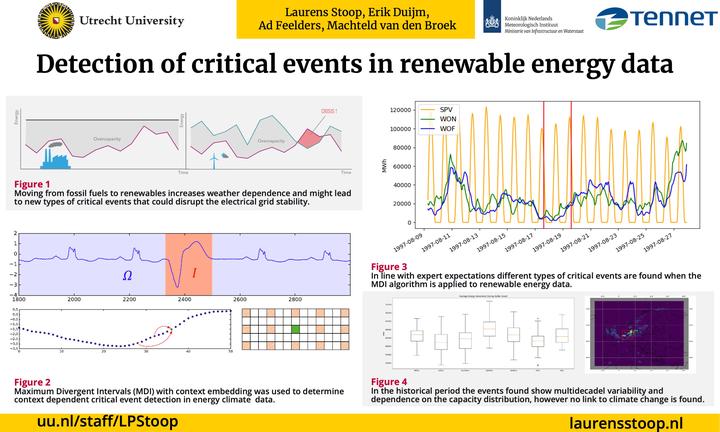Detection of critical events in renewable energy production time series
 Poster for the Utrecht University Computer Science research symposium
Poster for the Utrecht University Computer Science research symposium
Abstract
The introduction of more renewable energy sources into the energy system increases the variability and weather dependence of electricity generation. Power system simulations are used to assess the adequacy and reliability of the electricity grid over decades, but often become computational intractable for such long simulation periods with high technical detail. To alleviate this computational burden, we investigate the use of outlier detection algorithms to find periods of extreme renewable energy generation which enables detailed modelling of the performance of power systems under these circumstances. Specifically, we apply the Maximum Divergent Intervals (MDI) algorithm to power generation time series that have been derived from ERA5 historical climate reanalysis covering the period from 1950 through 2019. By applying the MDI algorithm on these time series, we identified intervals of extreme low and high energy production. To determine the outlierness of an interval different divergence measures can be used. Where the cross-entropy measure results in shorter and strongly peaking outliers, the unbiased Kullback-Leibler divergence tends to detect longer and more persistent intervals.These intervals are regarded as potential risks for the electricity grid by domain experts, showcasing the capability of the MDI algorithm to detect critical events in these time series. For the historical period analysed, we found no trend in outlier intensity, or shift and lengthening of the outliers that could be attributed to climate change. By applying MDI on climate model output, power system modellers can investigate the adequacy and possible changes of risk for the current and future electricity grid under a wider range of scenarios.